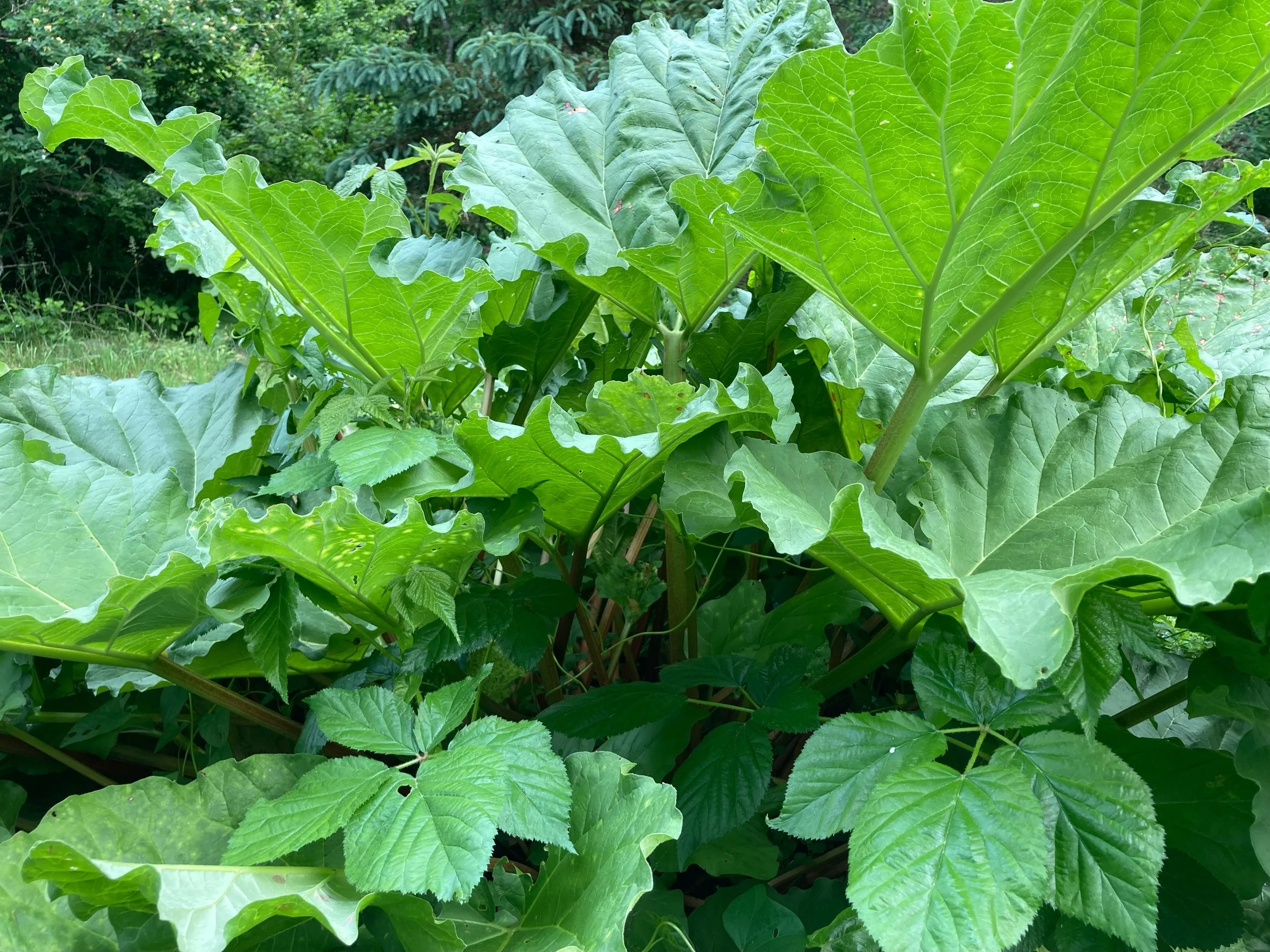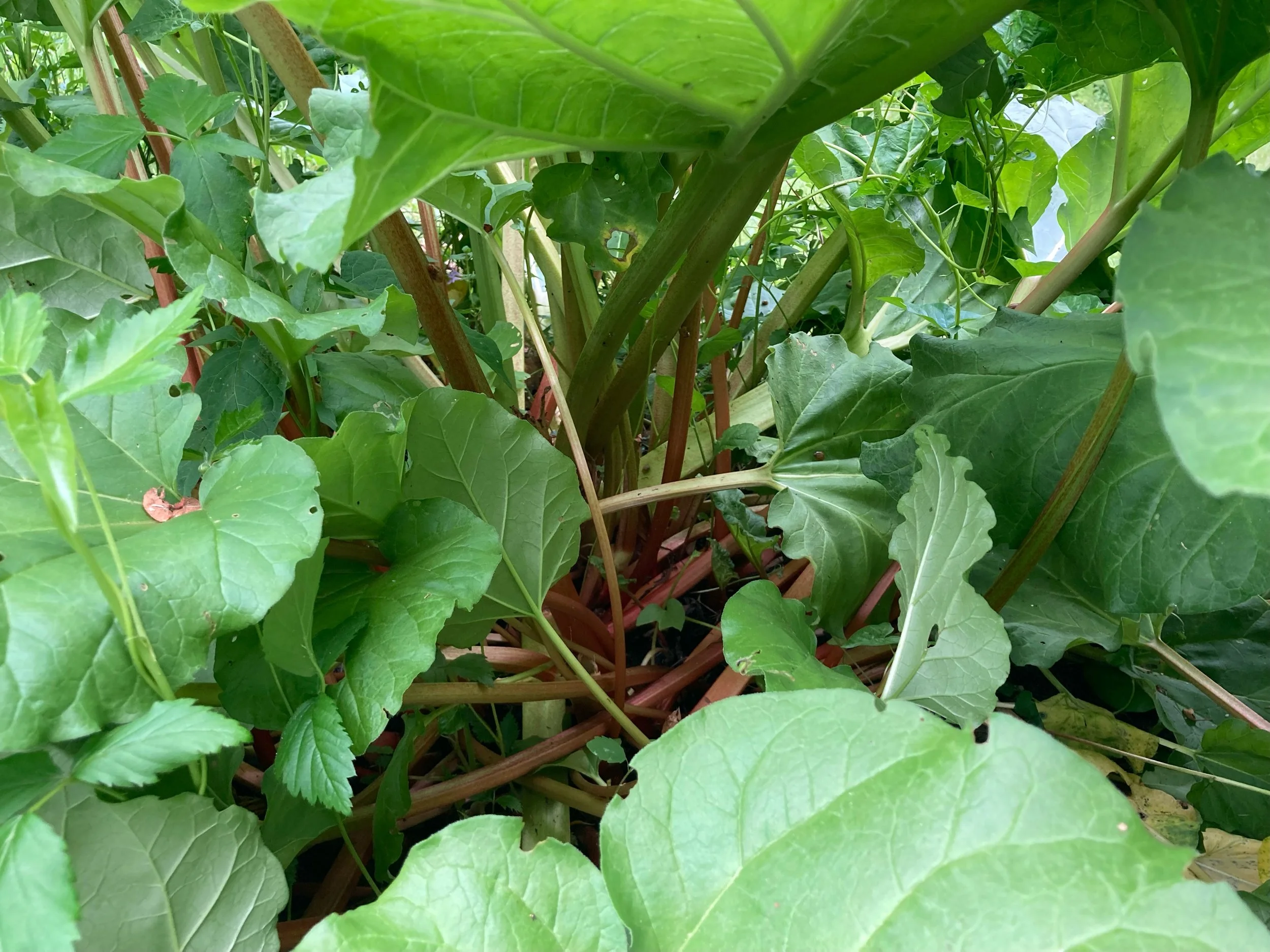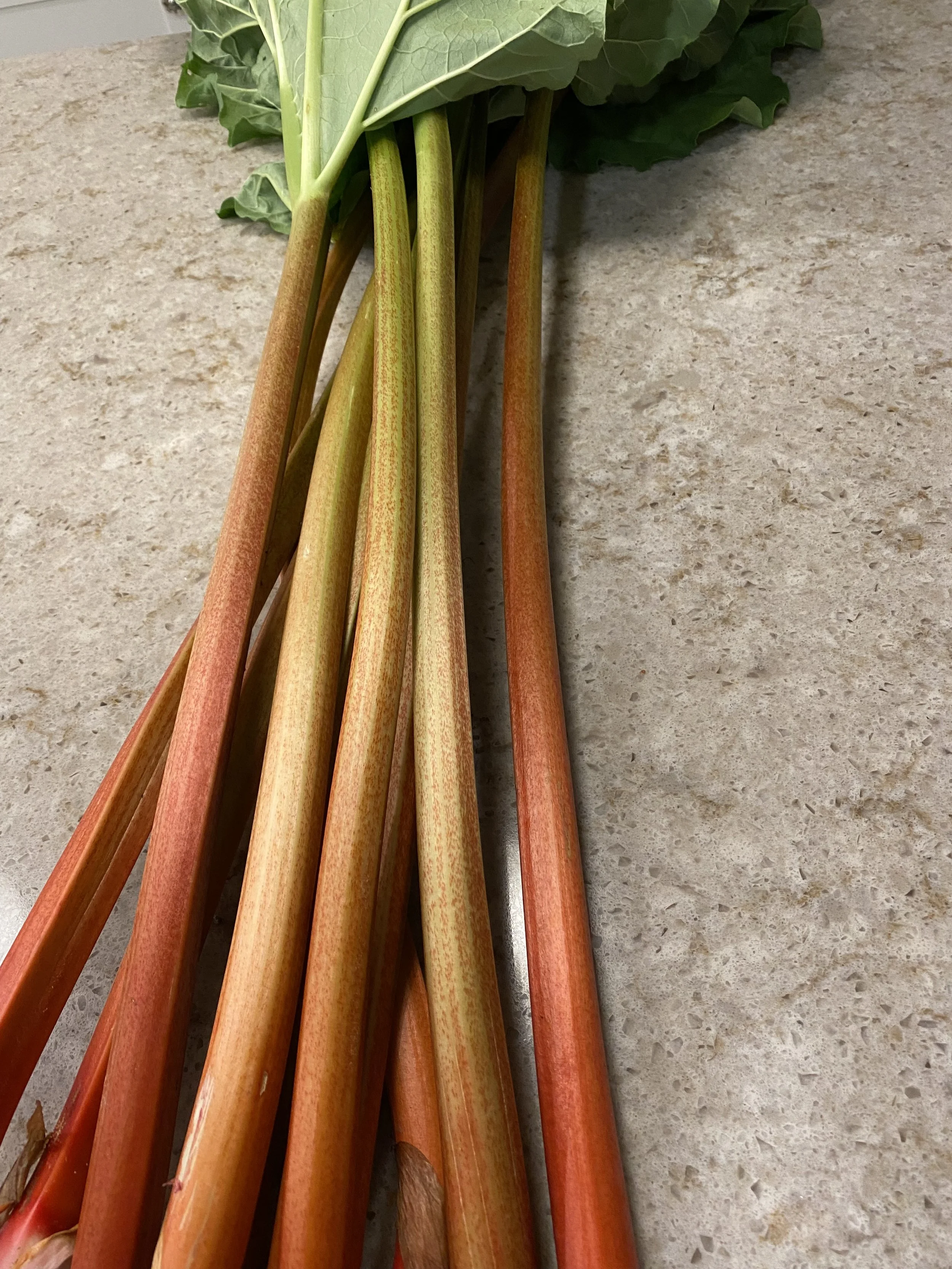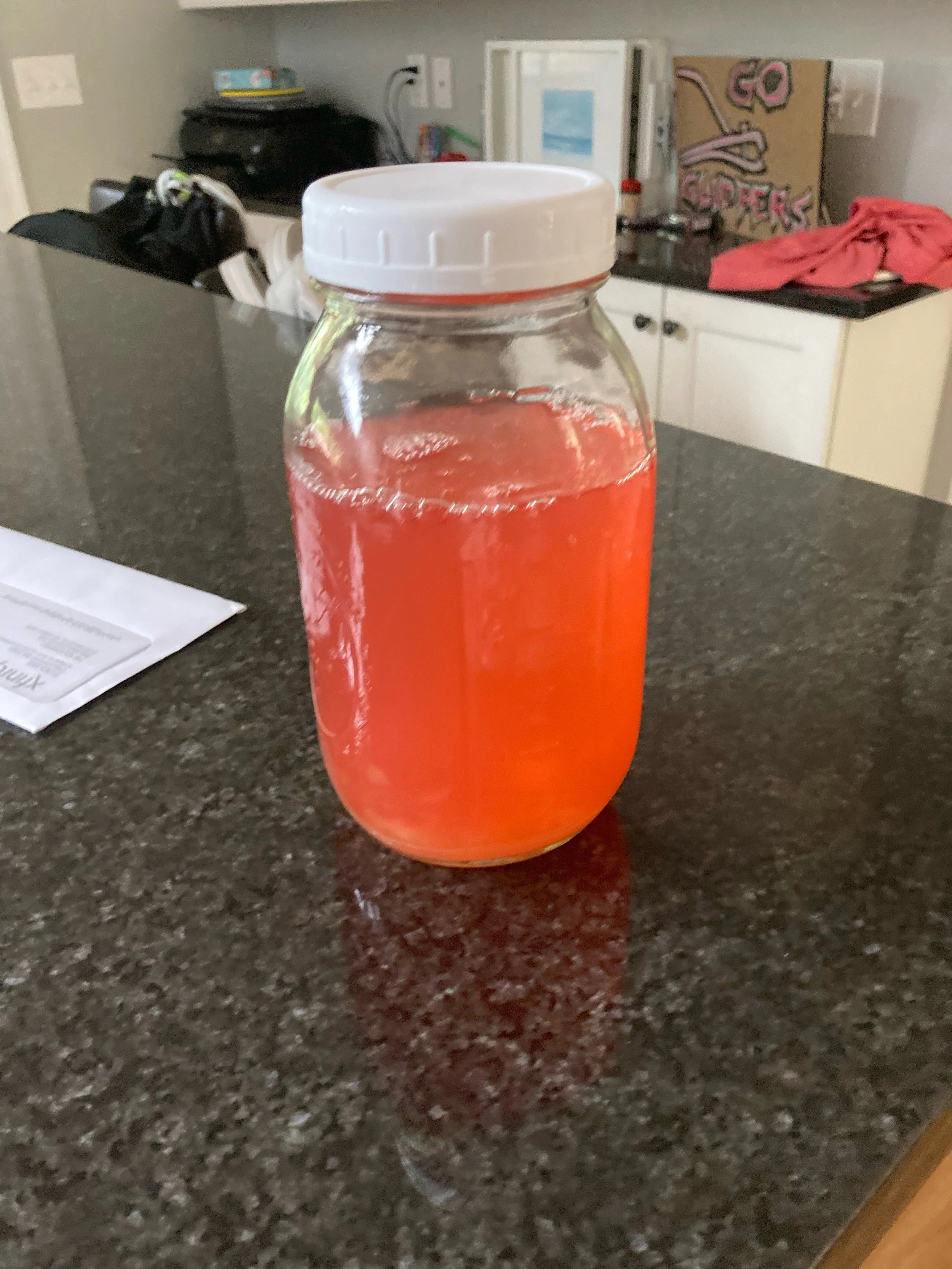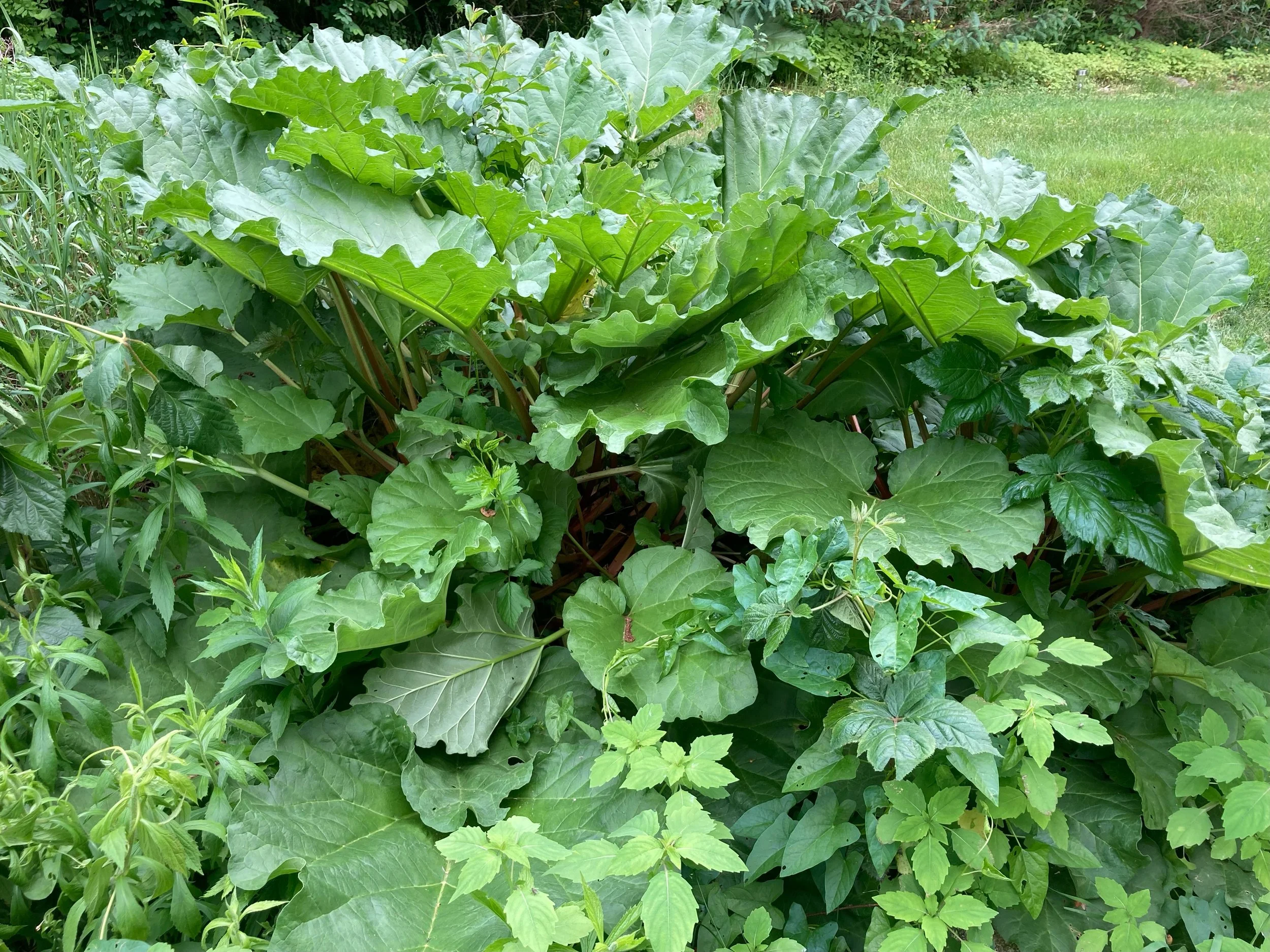RAMPANT RAMBLING RHUBARB
/Way back, my brothers and I used to play in the woods surrounding our white clapboard farmhouse in Central Valley, New York, looking for crawfish hiding under rocks in the rushing brook and building forts atop mossy greenery in an area we named Sherwood Forest. I vividly remember a June day we three discovered a patch of rhubarb thriving near the apple orchard. “Why not?” we said, snapping off long red stalks to chomp.
“Yuck!” “Gross!” “Horrible!” Sourest thing I ever put in my mouth.
That night Mom served stewed rhubarb for our dessert. “Oh no,” I gasped, then amazingly proceeded to clean my bowl of the simultaneously sweet and sour concoction. Her recipe was absolutely delicious, and every June since I “grew up,” I look for fresh rhubarb to make her recipe.
Last week I dropped off a container of the wonderful stuff at a friend’s house. She emailed: “Val, what do I DO with this?” (OMG, I thought, this gal is an inventive and creative cook but she doesn’t know rhubarb. I suggested she dollop it on vanilla ice cream, or eat as is.)
If that smart gal didn’t know much about rhubarb, I figured there was a lot I didn’t know either. So I started poking around Google.
I found two definitions. One indicated that “rhubarb” is baseball slang for a fight among players and/or umpires. Okay. The other definition was more to the point, revealing that rhubarb starts as a vegetable with thick leaf stalks that are reddish or green, and is eaten as a fruit after cooking. Mother Nature at her most accommodating.
Bakers opt to put rhubarb in crumbles and crisps, tarts and pies, cobblers and scones, even jams and chutneys. You can freeze rhubarb raw, blanched or fully cooked (but be aware that it breaks down as it defrosts).
Is rhubarb good for us? A resounding yes!
It was originally grown in China and traded for medicinal purposes. Ancient Greeks cultivated rhubarb and called it “rha barbaron,” a combination of two words meaning “not from around these parts.” (We Mainers call that “being from away.”) Somehow, fortunately, rhubarb found its way to the States.
Health-wise, rhubarb is rich in antioxidants, particularly anthocyanin and proanthocyanidins, ridiculously unpronounceable words that translate to anti-bacterial, anti-inflammatory and anti-cancer properties. One cup of cooked rhubarb contains 65% of your daily recommended amount of vitamin K which is essential for blood clotting. It also keeps you, uh, regular. You know what I mean…
Down in Portsmouth, daughter Alex and husband Tim cultivate a lush rhubarb patch in the woods behind their house. Over the years she’s baked enough rhubarb pies to open her own bakery. They also belong to a Cocktail Club with three other couples who meet once a month at their different homes for “special cocktails and nibbles.”
Last year Tim eyeballed his bumper crop and decided to concoct Rhubarb Fizzes for their guests. He says, “It starts with rhubarb syrup which Alex makes by simmering the rhubarb, then straining it. Then I add gin, club soda and a dash of lemon juice. Let me tell you, the party went well into the night.”
This year he’ll offer their guests a Rhubarb ’n Strawberry Cocktail, which is the same as the fabulous Fizz but served in glasses rimmed in cinnamon sugar and garnished with fresh strawberries. (I’m still waiting for my invitation, but mail can be slow here in the Wells woods.)
June and early July are rhubarb season here in Maine. So if you’re hunting for a foolproof and delicious way to cook the stuff, here’s my mom’s recipe:
GRANDMA’S RHUBARB
Ingredients:
3 pounds rhubarb, trimmed/cut into 3/4” slices
1 3/4 cup sugar
Preheat oven to 350. Place rhubarb in 13x9” baking dish, add sugar and toss well. Cover tightly with heavy-duty aluminum foil and bake 25 minutes. Uncover. Stir. Replace foil and continue cooking 20 minutes or until tender. Keeps 10 days in refrigerator.

